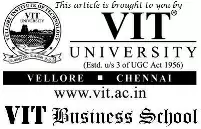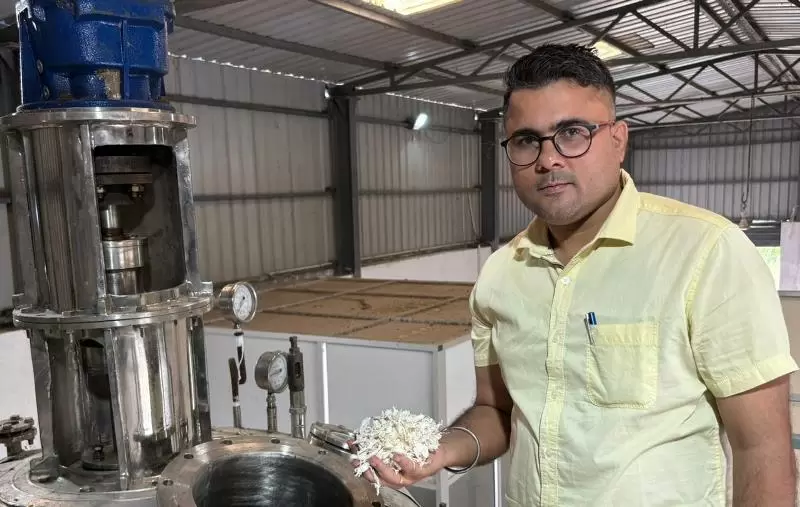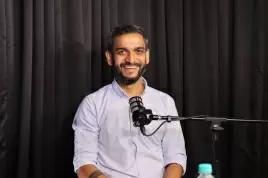Odisha Scientist Turns Toxic Prawn and Shrimp Shells into a Rs 3 Crore Turnover Eco Venture
Niroj Ranjan Misra
| Cuttack
11-December-2024
Vol 15 | Issue 50
Odisha’s nearly 489-kilometre-long coastline produces over 75,000 metric tonnes of seafood annually, including shrimps and prawns. Shockingly, about 30 to 40 percent of this is discarded as waste, mainly shells, which release toxic gases like ammonia and methane, posing serious threats to both human and aquatic life.
When such hazardous conditions prevailed along the Balasore seashore in Odisha, Dr Siddhartha Pati, a scientist-cum-ecologist and the son of a farmer, Trilochan Pati, from the Balasore district headquarters, took it as his mission to transform seafood waste into eco-friendly products like bioplastic, biopolymer, and biostimulant.

| Dr Siddhartha Pati, founder of Natnov Bioscience, transforms seafood waste into eco-products (Photos: Special Arrangement) |
‘Bioplastic’ offers a sustainable alternative to the harmful plastics used in the food packaging industry, while ‘biopolymer’ serves as a valuable resource in biomedicine.
Likewise, ‘biostimulant’ plays a dual role as a biofertiliser and biopesticide, contributing to greener agricultural practices.

“My goal was to create eco-friendly products using a biotechnological approach known as the ‘blue circular economy’. I wanted my venture also to provide job opportunities for the unemployed in my locality,” says Dr Pati, a member of the International Union for Conservation of Nature’s (IUCN) Species Survival Commission (SSC).
Dr Pati founded his startup, Natnov Bioscience, in Khantapada near Balasore in 2021. The company began operations in 2023 and now processes over 5,000 metric tonnes of seafood waste annually.
With around 30 employees and a turnover of Rs 3 crore, Natnov Bioscience’s products are utilised by pharmaceutical and biofertiliser companies, as well as food packaging units. These products are also exported to countries such as Turkey, Vietnam, and China.
Dr Pati’s journey to founding Natnov Bioscience is truly inspiring. While doing his PhD in biotechnology at Fakir Mohan University in Balasore in 2019, supported by a fellowship from the Bhabha Atomic Research Centre, he began thinking about ways to use seafood waste to reduce its toxic environmental impact.

| Seeafood waste is collected from the Balasore coast and local fish markets |
After his PhD, Dr. Pati had worked as a researcher and a scientist for several institutes of national and international repute in India, Malaysia and Indonesia.
But he finally quit his job of a postdoctoral scientist in University Malaysia Terengganu in Kuala Nerus, in 2021 to give shape to his dream with his scientist friend Dr. Debabrata Panda, who is now working on a research project in France.
He began to set up the infrastructure of his startup on a 1.5 acre piece of land in Khantapada in 2021, about 14km from Balasore town, and about 200 km from the state capital Bhubaneswar.
Dr. Pati started production in 2023 with the help of four scientists and a few hired labourers. He gathered seafood waste from the Balasore coast and local fish markets to produce his products on a small scale.
Set up under the Mukhyamantri Krishi Udyog Yojana with an investment of Rs. 2.06 crore obtained as a bank loan, 'Natnov Bioscience' is the only facility of its kind in Odisha. It has a daily processing capacity of 20 metric tons. Of the total investment, the state government provided a subsidy of Rs. 41 lakh.
Natnov Bioscience started by processing six kilograms of bioplastic and biopolymer per day on a pilot scale during the first three months.
It later began collecting seafood waste even from Digha in West Bengal, about 94 km by road from Balasore, at a cost of Rs 7 per kilogram, including transportation and handling charges.
“Locals in Digha keep seafood waste in a dried state for us, and our managers collect it by visiting twice a week,” says Dr Pati, the scientific director of Natnov Bioscience.

| Workers collect seafood waste even from Digha in West Bengal, about 94 km from Balasore |
Biodegradable bioplastics are mostly used by food packaging units, while biopolymers are mainly utilised in various biomedical applications.
On the other hand, 'biostimulant,' derived from 'biopolymer' in liquid form, possesses anti-fungal, anti-bacterial, and anti-viral properties. It can replace harmful chemical pesticides, besides acting as a biofertiliser.
“We used ‘biostimulant’ as an experiment on a number of chilli farmlands in Andhra Pradesh to test the soil’s ‘uptaking capacity,’ which helps enhance soil quality and immunity. We found crop productivity to have doubled there,” says Dr. Pati.
Dr Bishnu Prasad Dash, former professor and head of the Department of Bioscience at Fakir Mohan University, is highly impressed with Dr Pati's efforts to convert polluting seafood waste into eco-friendly products.
“Dr Pati’s Natnov Bioscience processes ‘chitin’ from prawn and shrimp shells to produce ‘chitosan’, which is further converted into biopolymer. This biopolymer is used to make sutures, artificial blood vessels, artificial skin, and many other products. It is also widely used as a coating for pharmaceutical capsules,” says Dr Dash, who visited Natnov Bioscience during its early stages.
Natnov Bioscience offers its products to pharmaceutical and biofertiliser agencies in India. “Similarly, we are linked with seven food packaging units to supply our biodegradable bioplastic to them,” says Dr Pati.
“Additionally, we export our products to countries like Turkey, Vietnam, and China. Overall, 80 percent of our business is with companies, while the remaining 20 percent is through a network of distributors.”
Dr Pati has received several prestigious awards, including the Future Conservationist Award (2018) from the Conservation Leadership Programme, Cambridge, United Kingdom, and the UNISERF (Udayana University International Senior Fellowship Award) in 2023 from Udayana University, Indonesia.

| Workers collecting shrimp and prawn shells for processing at Natnov Bioscience |
Although the quantity of seafood waste collected by Natnov Bioscience has not always been consistent, the process has remained regular. “On an average, we collect about 10 metric tonnes of seafood waste daily, of which nearly five percent is converted into our marketable products,” says Dr. Pati.
“To fully realise the potential of our startup, we need an investment of ?10 crore to enhance our processing capacity and expand our marketing network in the future.”
“We have participated in several national and international industrial expos to build our marketing network and have personally approached key industry leaders for the same.” - ©TWL
















